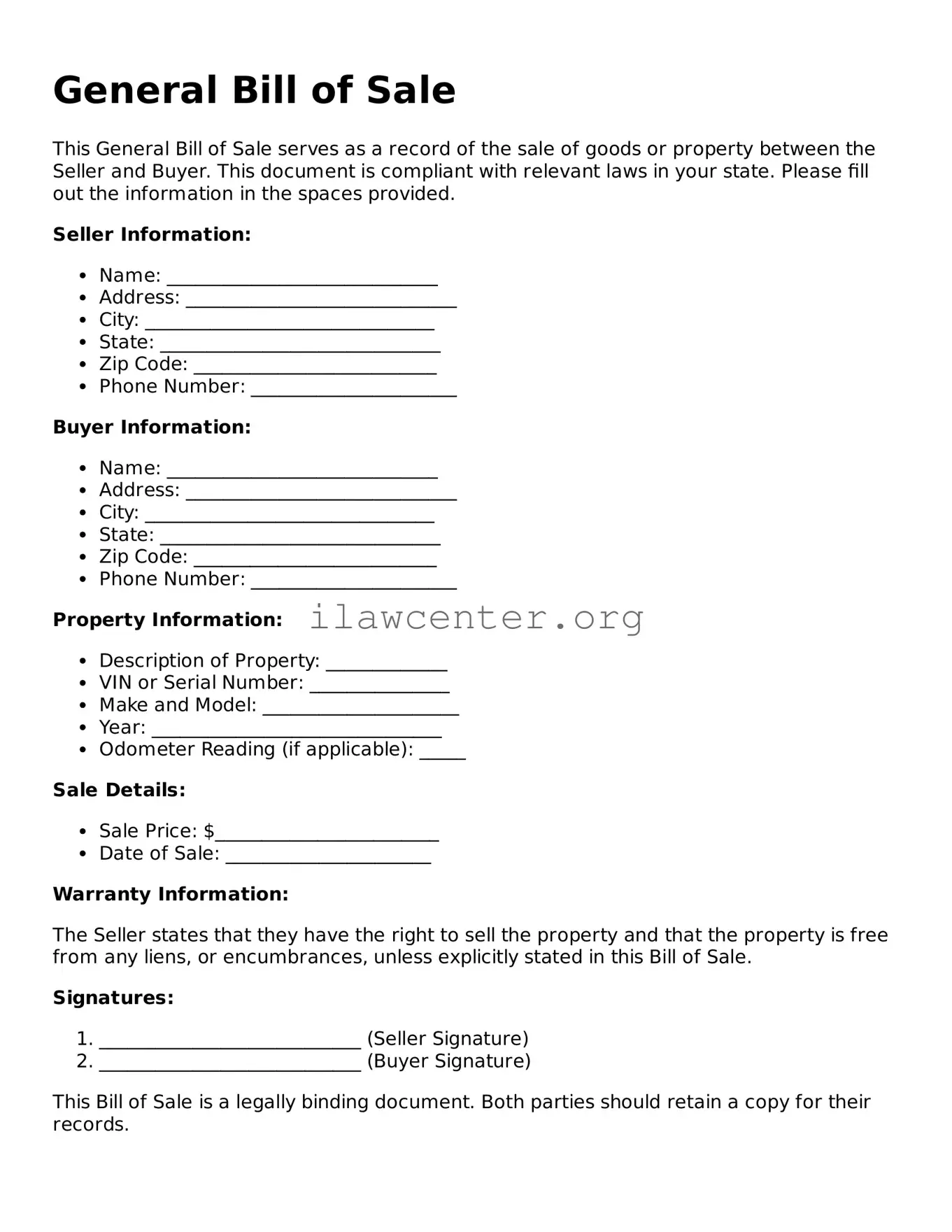Instructions on Utilizing General Bill of Sale
Once you have the General Bill of Sale form in front of you, it's important to ensure that all relevant details are accurately filled out. This process aids in documenting the transaction, making it clear for both parties involved. Follow these steps carefully to complete the form correctly.
- Gather information: Collect essential details about the transaction, including the names of both the buyer and seller, the date of the sale, and the payment amount.
- Title the document: At the top of the form, write “General Bill of Sale” to indicate the purpose of the document clearly.
- Buyer’s information: Fill in the buyer's full name and address. Make sure this information is accurate, as it identifies the new owner.
- Seller’s information: Enter the seller's full name and address. This information should also be precise to avoid confusion later.
- Date of sale: Write the date when the transaction takes place. This is crucial for record-keeping.
- Description of the item: Provide a detailed description of the item being sold. Include important details such as make, model, year, and any unique identifiers, like a VIN for vehicles.
- Payment amount: Clearly state the total amount paid for the item. Being clear prevents misunderstandings about the finances involved.
- Signatures: Both the buyer and seller must sign the form. This signature serves as a legal acknowledgment of the transaction.
- Witness or notary (if required): If your state requires it, have a witness or a notary public sign the document to validate it further.
After completing these steps, you will have a valid General Bill of Sale ready for use. This document serves as evidence of the transaction and may need to be retained for future reference. Be sure to keep copies for both parties involved.
